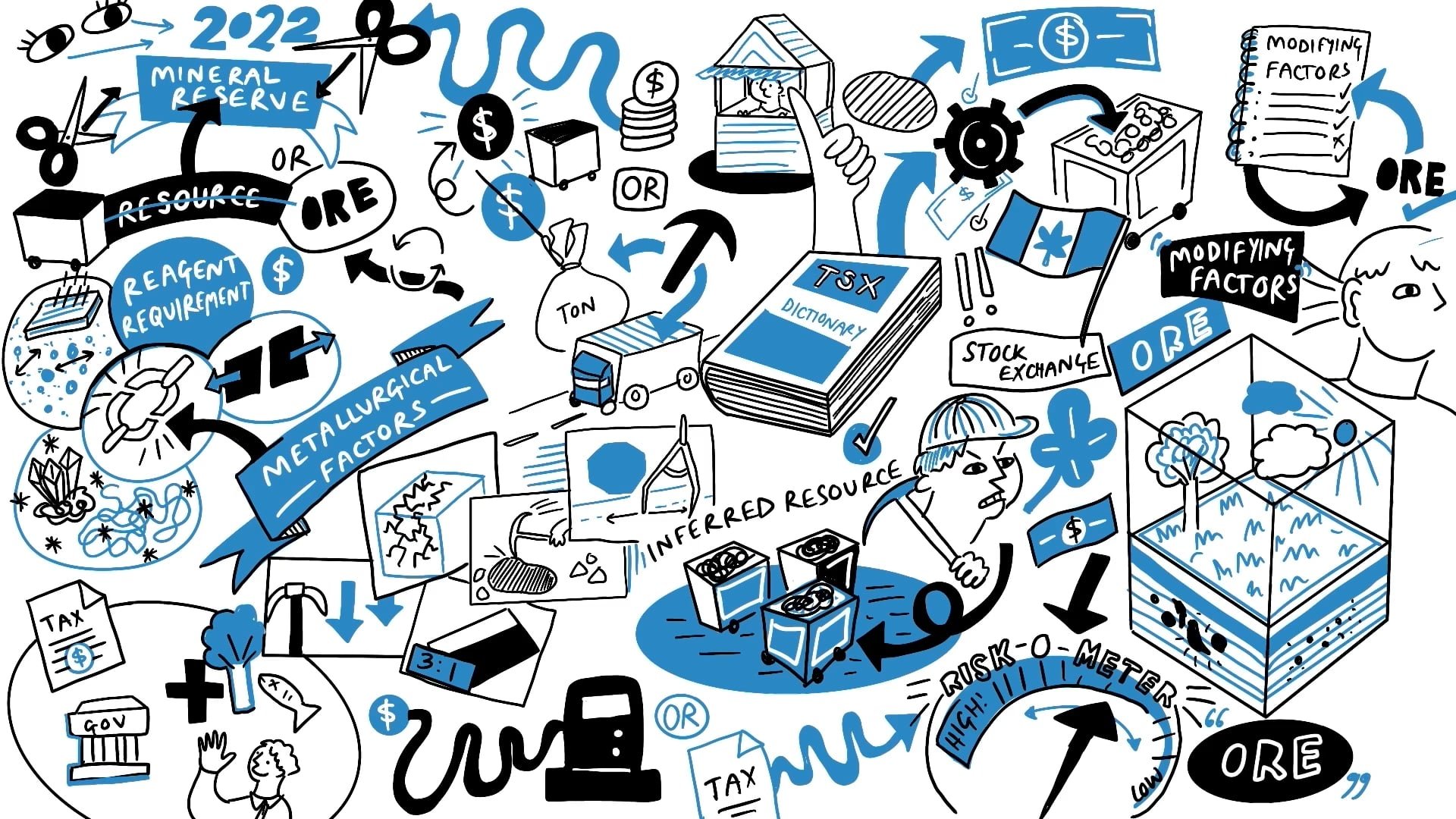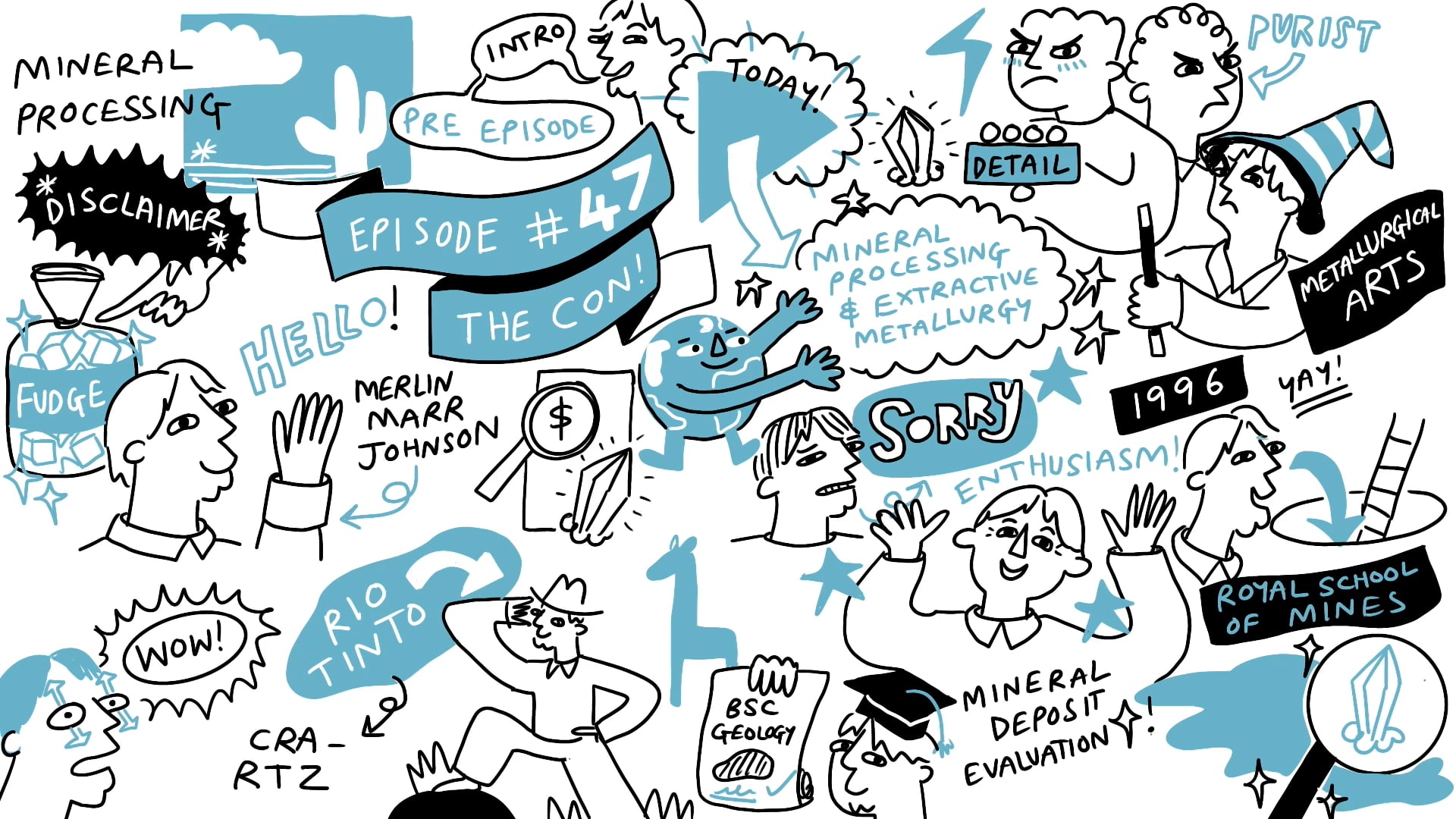Technical Studies: Moving Data Sets & the McKinsey Mining Study

More episodes
Transcript
Moving Data Sets
Another challenge for exploration companies and development companies, in fact for producers as well, is that you’re not dealing with a final data set when it comes to doing these Feasibility Studies. I call this the moving feast problem. It’s especially pertinent for exploration and development companies because they have this time pressure. They raised $5M or $20M, they need to advance the project before the money runs out and they need to raise another bit of capital. What tends to happen is once they’ve got a first resource together, they start wrapping an economic study around their first resource. There’s time pressure, so they do the study in parallel with exploration. What you can often find is that companies that are too keen to push ahead with the Scoping Study then move into the Pre-Feasibility Study, for example; suddenly a year later they’ve actually got much more data, and either the deposit is better or worse, but if you’re on a good project, what you’re going to find is that the project gets better and better, there are more tonnes, and 10km north they’ve just found a high-grade thing. Actually, what you find is the scope of the project changes and it renders your earlier study obsolete. This is a waste of time and money, but management teams fall into that trap of thinking it necessary at the time. It’s always worthwhile getting your shareholders to understand what your objectives are and aligning your objectives with the geology that you’ve got in front of you. It comes back to one of the earliest sessions on the Con that I did which is about your strategy. What are you trying to do as a management team? Are you trying to find and build a small mine or are you exploring for the biggie? It all comes down to strategy and companies can make and waste a lot of money on this. Again, a producer will have more time and more money to make better decisions but even big companies can spend a lot of money on a study, then with some further exploration can show that that first study is obsolete and therefore that constitutes a waste of money. But they’ve got the balance sheet to measure it.
Spent years on Massawa in Senegal. It’s a big deposit, it was high-grade, above 2g/t. I think it was 2.6g/t, 3Moz, and they went over and over it again, doing study after study, reinterpreting the geology, and eventually, they sold it. These bigger companies have got the time and the luxury to be able to afford to really make sure that they understand the deposit before they know what they’re going to do with it. The junior company has that time pressure. They can often spend a lot of money on a stud and then they have to redo it. Not good.
A further point is to understand the capacity that these companies have to do these major studies. Most exploring companies, explo companies, start small. They’re lean and they’re mean, they don’t really have engineering capacity, and it’s often run by a charismatic founder CEO who is very good at licking rocks and raising money and selling a dream, but perhaps not quite so well equipped to run a data-heavy Pre-Feasibility Study, let alone a Feasibility Study. And so one comes to the question of how the team grows, does it have an appropriate owners team, and can these projects really be run efficiently when they are farmed out to consultancies? Remember a consultancy, an SRK of this world, will have a different set of values and different sets of incentives. Their aim is 2-fold. One is to make sure that they don’t mess up on this project and have a disaster. The second is that they want to keep the contract, they want to keep going, so in a sense, they want to please the client. For them, it becomes really hard to make the right decisions because they’re stuck between trying to avoid risk and actually trying to show that this thing really works.
The further you go in your study chain, it’s absolutely vital that you’ve got a strong member’s team embedded with the consultancy. I often say that when you’re looking at an exploration development company, one of the key things is to see whether they’re actually driving their own geological model in-house. You need to have someone who can actually model the resources, otherwise, they’re going to be led all over the place by the consultancy. It’s not a clincher but it’s certainly, for me, a massive red flag if a company doesn’t have its own in-house resource modelling capacity.
McKinsey Mining Study
The final thing I would say is that the industry has got a terrible track record of actually delivering on their studies. McKinsey rather cleverly did a comprehensive study in 2019, and they looked at more than 40 mining projects that had been completed in the previous 10-years. It’s quite startling. Having gone through this, remember that the Feasibility Studies that will be completed are by and large done by reputable houses and by sensible mining companies. There is diagram that’s from the McKinsey report from 2019. It talks about optimising Feasibility Studies to save $100Bn in the future. The graphic that I really like says that 20% of the 40 projects were at or under the sanctioned budget. They typically overran by 6-months in terms of time. To get both on time and budget is very, very hard.
Almost 20%, 17%, were wishing their estimate. Typically, a Feasibility Study is 15% accuracy and 17% of the companies were in that 15% over budget. Interestingly the ones that slightly overspent or were within their sanctioned budget, delivered slightly early. On average, they were just before their timeline. That’s really interesting. You’ve got 37% of the group who were within 15% of the sanctioned budget and more or less on time. That’s great but that does, unfortunately, leave 2/3 that were way over budget and late. There’s actually 44% of the sample that they looked at were between 15% and 100% over the sanctioned budget. McKinsey called these project disasters. Over half of all projects exceeded the sanctioned budget by at least 15% at an average overrun of 49%.
The final category is what McKinsey calls corporate disasters, which is when they’re over 100% of the sanctioned budget. 19% of the projects surveyed, this is 1 in 5 projects surveyed, overran the original budget by over 100% with the average cost 3 times the initial estimate, and not only that but the average schedule overrun is 29-months, 2.5-years more or less. It’s scary stuff. This is why benchmarks are so vital.
Conclusions
It’s important to know what the different studies do and why.
- Just as a recap, the PEA or Scoping Studies are all about what could this project be.
- The PFS, Preliminary Feasibility Study, is all about what should this project be, what process route or mining of choice.
- The Feasibility Study is all about what will this project be. How much money are we going to make, how many tonnes, at what grade, are we going to mine, and then how much product are we going to get out at the end?
The second key point is that there’s what I call the CEO paradox, which is that the explorer or the developer has got different priorities to a producer, so the explorer developer sees the Feasibility Study or technical study as a valuation milestone, but the producer sees it as a technical milestone. It really changes the interpretation of what the study is really doing. If you go back to Berkshire Hathaway’s Charlie Munger, he says, ‘Show me the incentive and I’ll tell you the outcome.’ You’ve got to actually think why this company is doing this and understand the nature of the technical study despite all the rules.
The third problem is the moving feast. When and how to incorporate new data that could come into a project and potentially change the scope. It can end up costing a lot more. Watch out for companies rushing to produce a study too early.
The fourth point is about internal capacity. Beware teams that haven’t grown enough and the key thing is, is the resource being done in-house because that drags so much. Have they got capable people on the owners’ team embedded with the consultants?
The final point, illustrated by McKinsey, is that even when it’s done at the Feasibility Stage, the industry has a terrible track record of delivery. 1/3rd were within guidance, 2/3rds were not. Of the total, 20% were way over budget. Come back to benchmarks, benchmarks, benchmarks. Watch out for the incentives, why people are doing what they’re doing, and have they got the right team?









































.jpg)
.jpg)
.jpg)
.jpg)















